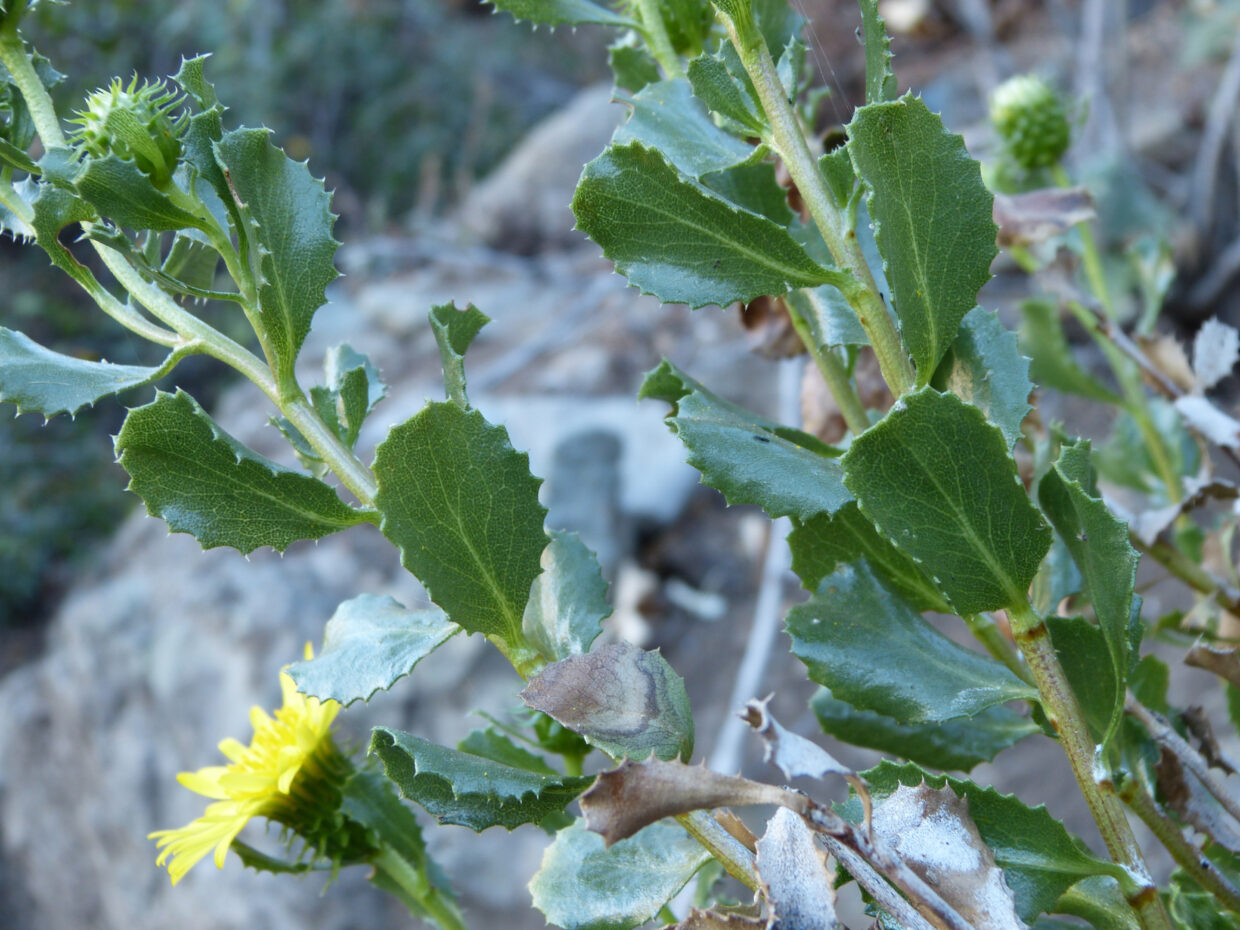Place of Publication
Publ. Carnegie Inst. Wash. 389: 324 (1928)
Type citation
Type:—CHILE. Región Metropolitana de Santiago: Provincia de Chacabuco, Altos de Tiltil, April 1895, Julius Philippi s.n. (lectotype designated by Klingenberg (2007: 300): SGO 57522!; isotype: SGO 44187!).
References
-
Hall (1928)
Hall, H.M. 1928. The genus Haplopappus. A phylogenetic study in the Compositae. Publications of the Carnegie Institution of Washington 389: 1-391
-
García et al. (2018)
García, N. , Medina, P. and Morales, V. 2018. Haplopappus mieresii sp. nov. (Asteraceae) and the reinstatement of H. reicheanus from central Chile. Phytotaxa 376(2): 103–113
Iconography
- García et al. (2018): Fig 4, 5.
Distribution and habitat
Known from a few mountainous areas of central Chile between the localities of Cerro Tabaco (32°39’S) and Altos de Chicauma (33°11’S). In Altos de Chicauma it inhabits shady, rocky outcrops on south-facing slopes, between elevations of 1200 and 1500 m above sea level. The surrounding vegetation consists of sclerophyllous forest and scrub vegetation with Cryptocarya alba, Porlieria chilensis, Quillaja saponaria and Viviania crenata (García et al. (2018).
Conservation status
- Endangered B1+B2ab(iii), (García et al. (2018))
Descriptions
- García et al. (2018)
Habit
Evergreen shrub 0.3–0.6 m tall.
Key characteristics
Similar to H. decurrens but differs by having cauline leaves mostly obovate to suborbicular (vs. oblong to oboblong wider than 2.5 cm (vs. 1 or less cm wide), capitula sessile to subsessile (vs. short-pedunculate), and phyllaries recurved with three conspicuous parallel veins abaxially (vs. straight with one conspicuous vein) (García et al. 2018).







